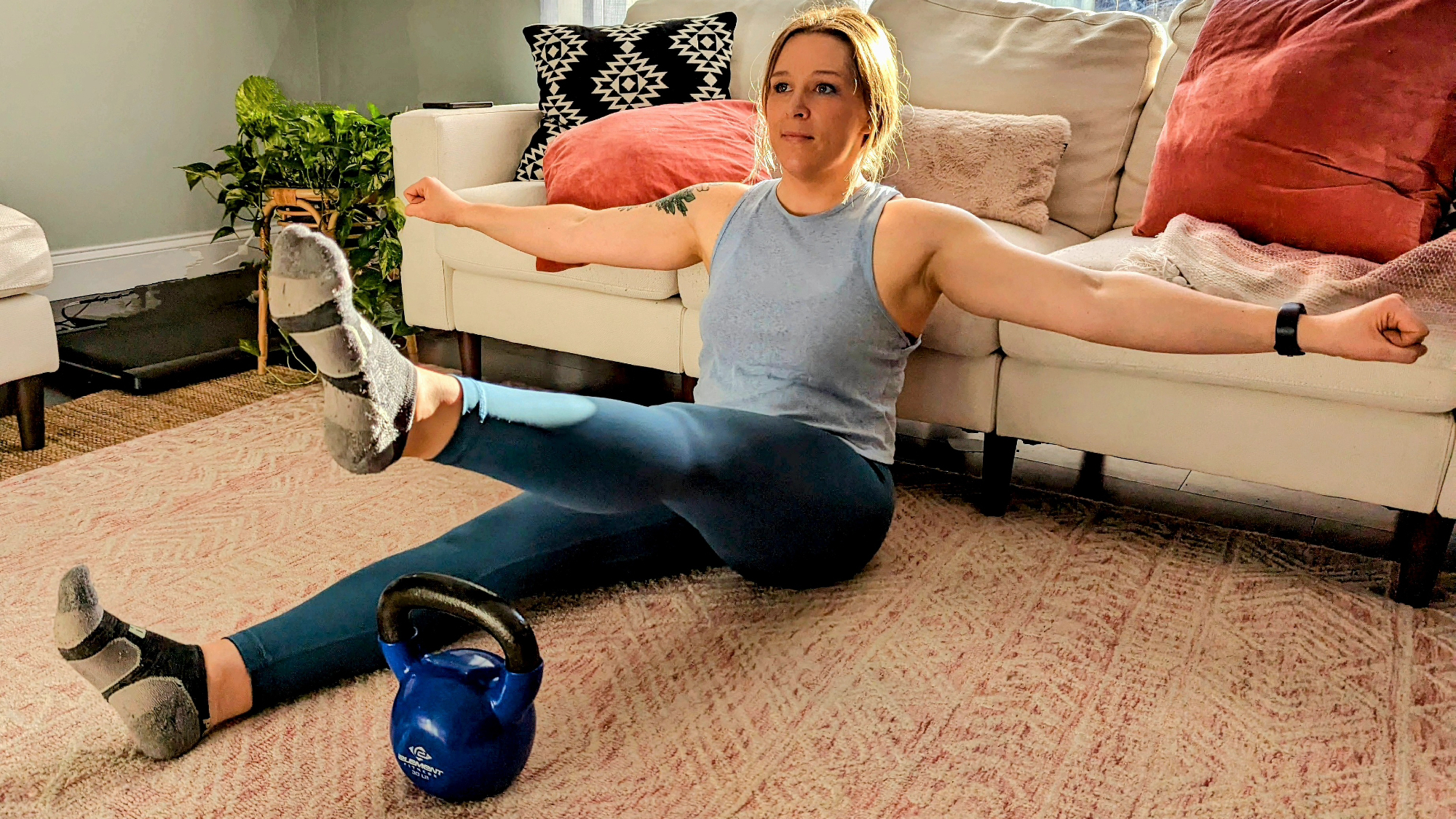
As a personal trainer, I use my recovery day workouts to improve my mobility, stability, and range of motion while correcting for any possible dysfunctions and allowing my muscles and body to relax.
I do this because recovery is when the magic of your training really happens. It's when your body starts to heal from your exercise and repairs the tiny tears in your muscle fibers caused by working out.
Some people invest in one of the best foam rollers to massage their muscles, which is one way to recover from your training. However, I prefer to add some movement to my rest day post-workout recovery session.
This helps keep your body moving, increasing blood flow to your tissues where healing can occur. If you want to add gentle movement to your rest days, too, I've shared my favorite seven-move recovery day workout to get you started.
Seven-move active recovery day workout
This short routine is one of my top recovery day workouts. It helps improve everyday movements and can even combat the effects of sitting and intense training sessions.
It's a form of active recovery, although you don't necessarily need to do a structured routine like this, as walking, light cycling, swimming, and yoga are also great options.
1. Shin box
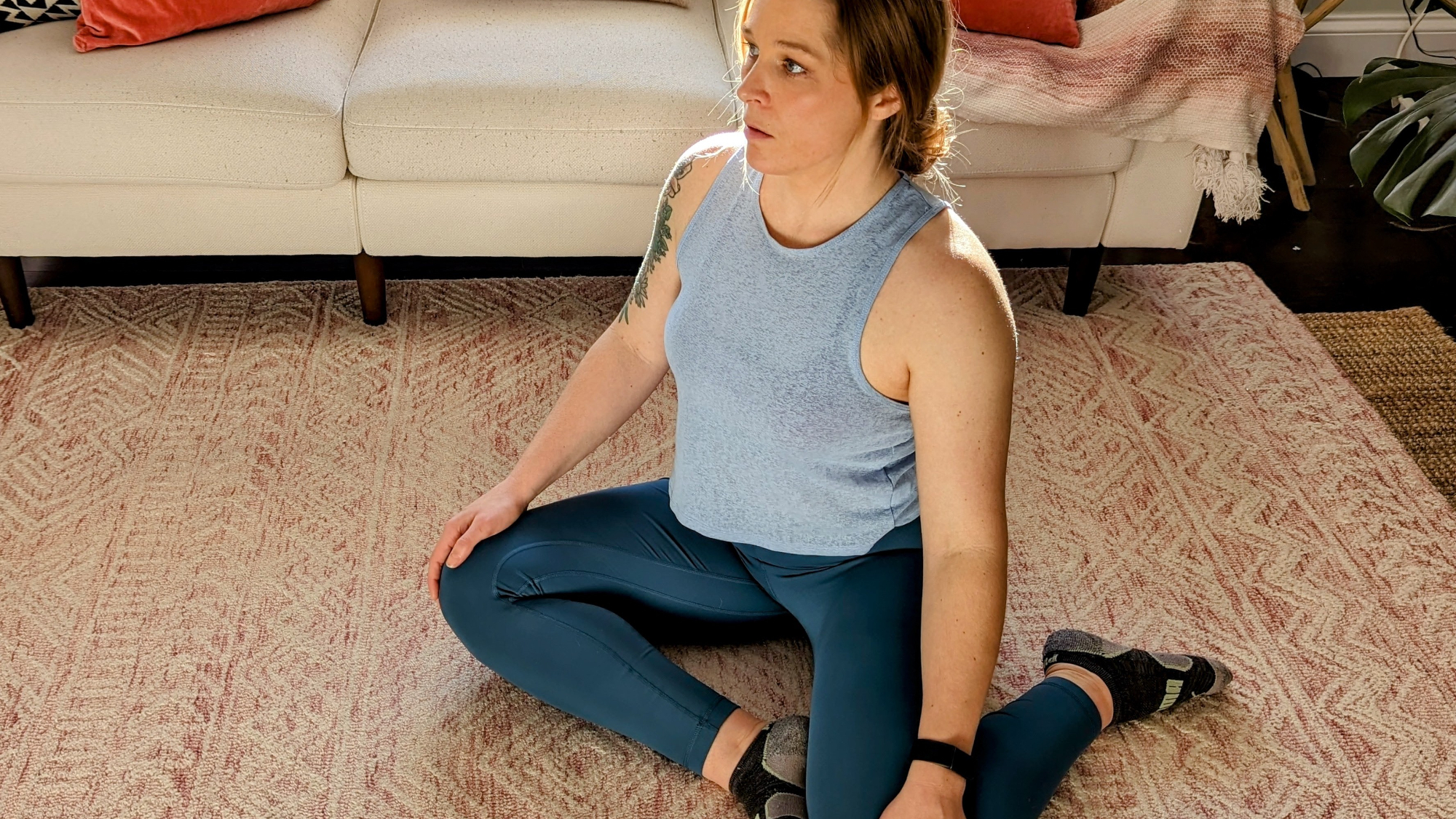
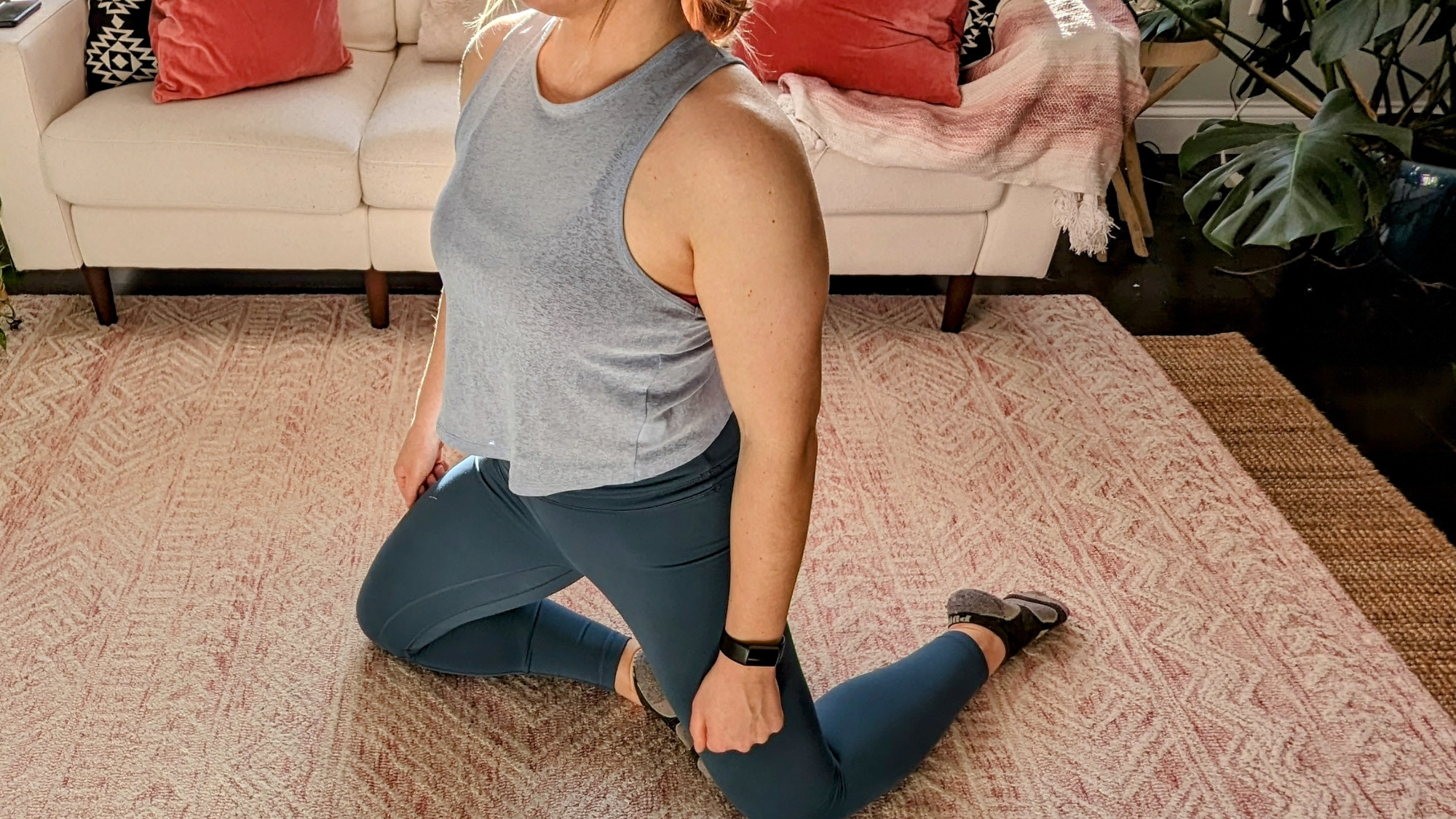
The shin box is a fun hip mobility exercise I first learned in jiu-jitsu training to help prepare the hips for a lot of movement and muscle activation while rolling.
But beyond that, the shin box is the perfect way to work on your hip mobility and loosen up tight hips from your workouts or from time spent sitting during the day.
The movement involves internal and external rotation of the hips, which is crucial to help you avoid rounding your lower back during exercises like squats. It also helps improve your range of motion, making your workouts more effective.
- Sit on the floor with one leg in front, bent at the knee.
- Your back leg will also be bent at the knee, facing backward, with your foot facing away from you.
- Some prefer the foot to touch the knee, while others need an open stance. See which works for you.
- Swivel your hips, starting with your back knee and allowing your front knee to follow.
- Your knees will come off the ground and swivel across like a windshield wiper, grounding your heels and lifting your knees up, and rotating them across your body.
- At this point, you will be back into the starting position but on the opposite side with the opposite knee in front.
- Practice this swivel a few times.
- Next, try to lift your hips and glutes off the floor after a swivel, raising into a kneeling position at the top.
- Control your body weight to lower and swivel up onto the opposite side.
- Repeat for 10 repetitions on each side.
2. Bird dog
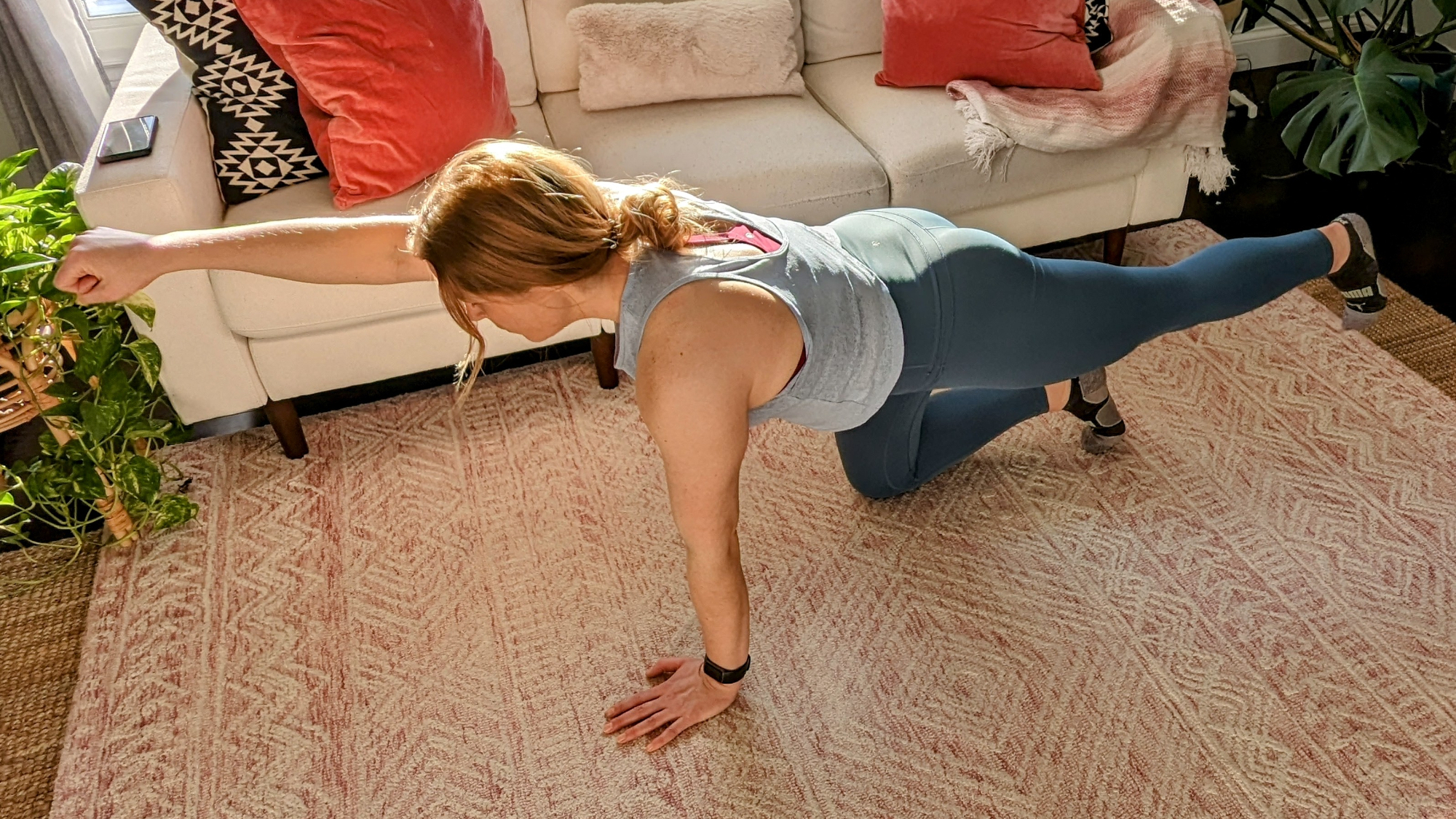
Bird dogs are a practical exercise that moves several areas of your body, but getting the technique just right is essential. Done correctly, the bird dog will help you work on torso stability and core bracing, which are vital for improving your deadlift, squat, and other movements.
Doing this movement on your recovery days can help you avoid losing stability in your core and spine during lifting days. The result? Less pain, better performance, and way less likelihood of injury.
Moreover, bird dogs are renowned for boosting recovery from back pains and strains and are recommended in a paper by Dr. Stuart McGill, one of the world's top back and spine researchers.
This exercise is one of his "Big Three" movements for the back and core, used by physiotherapists and pain-free performance specialists (like myself) for clients with lower back tightness.
It looks easy, but the goal is to make it feel challenging. To do this, you must tense your entire body and keep yourself steady.
- Start on the floor on all fours, with your wrists stacked under your shoulders and knees under your hips.
- Stiffen your torso by contracting the muscles in your back, abs, glutes, shoulders, and hips.
- With your lower back stiffened, extend your right arm and left leg very slowly.
- Keep your foot about two to four inches off the floor, not raised super high behind you, so that you can keep your hips level without your back arching.
- Keep your lower back stiff, and make a fist with your extended arm.
- With a stiff body, hold this position for 10 seconds.
- Slowly bring your leg back underneath you along with your fist, touching your knee to your fist if you can. Do not allow your back to relax; keep it stiff.
- Raise back up to the extended position.
- Try five reps of 10-second holds on each side. Gradually add reps as you improve.
3. T-Spine rotational lunge
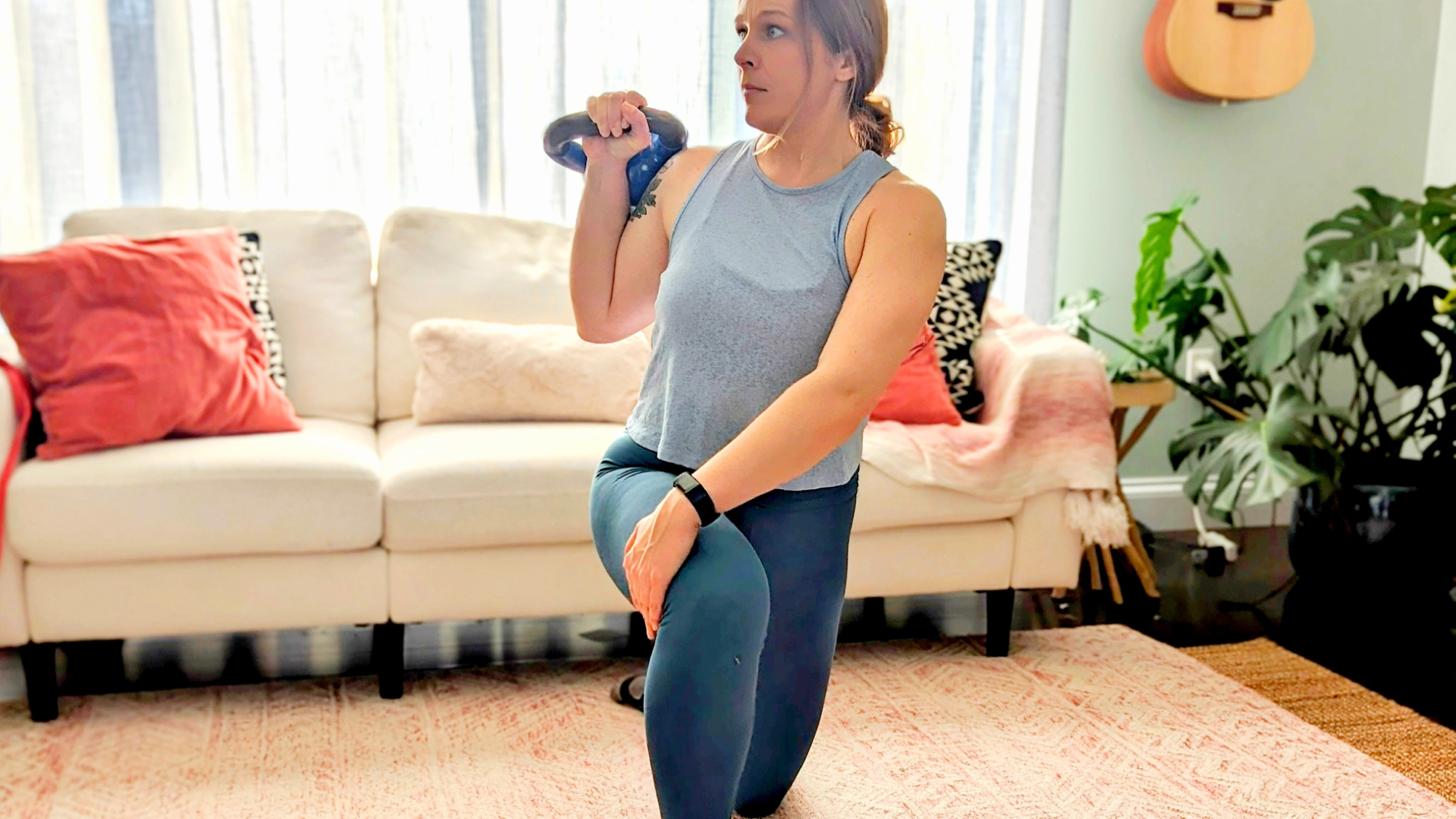
Our bodies aren't designed to sit for long periods each day, so it can cause problems in your upper back and spine, often leading to muscular imbalances, weakness, and tightness across your body.
Depending on your job and habits, your shoulders may feel tight and have a limited range of motion, with one side being worse than the other. To help reduce these impacts, you can try this rotational lunge.
It incorporates the t-spine and helps stretch the lower back, hips, and hip flexors. You can hold a kettlebell in one arm for this movement or use body weight.
- Start on the floor kneeling, then place one leg in front in a lunge, foot flat on the floor, and knee bent 90 degrees.
- Hold a kettlebell in a racked position up by your shoulder, if using, in the same arm as your bent front knee. This will help improve shoulder stability.
- Slowly twist toward your front knee, rotating your torso while keeping your back straight.
- Use your free hand to grasp the outside of your raised knee, gently pulling yourself to encourage a deeper rotational stretch.
- Hold for five seconds.
- Try performing this movement two or three times on each side.
4. Prone cobra
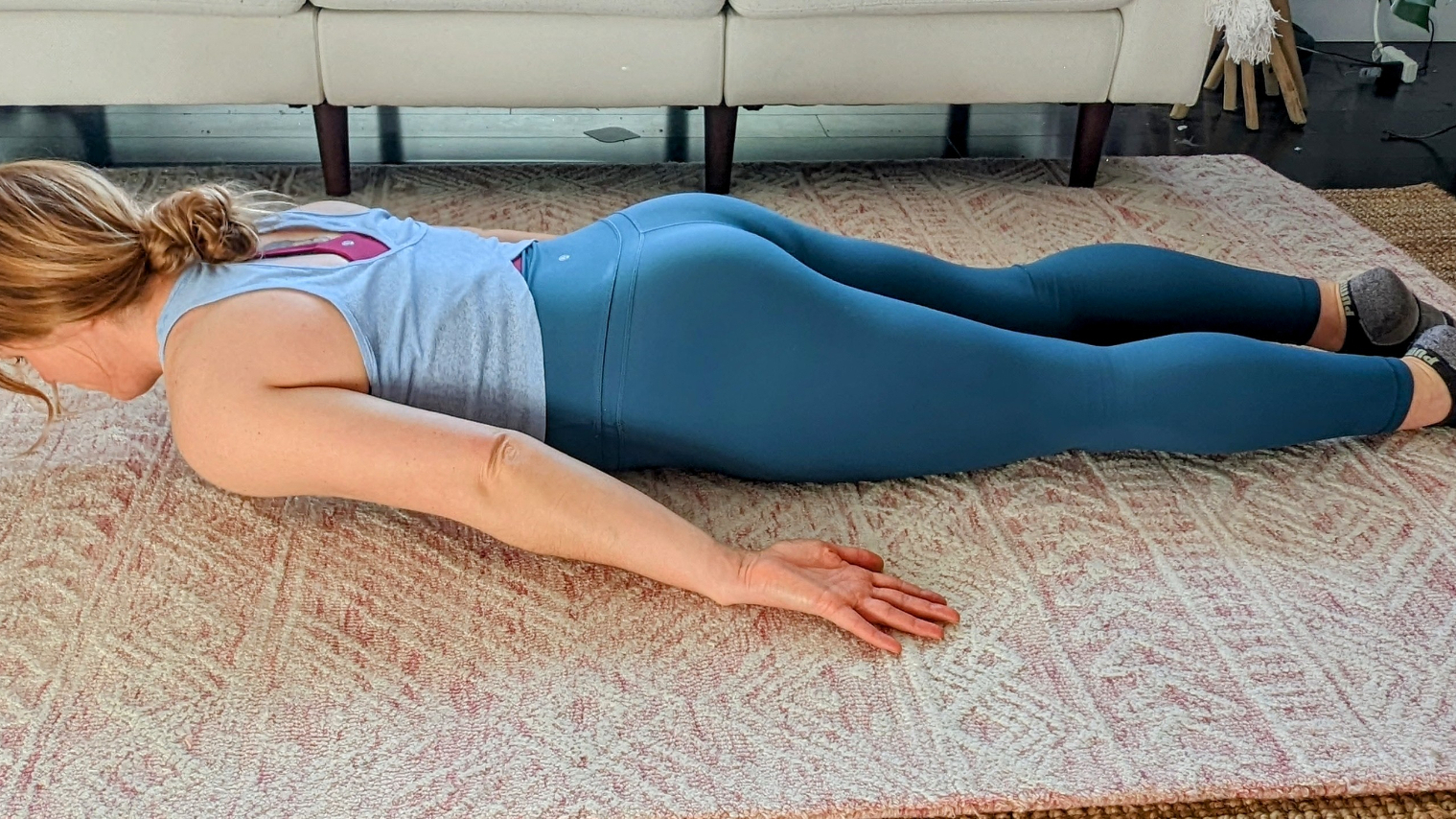
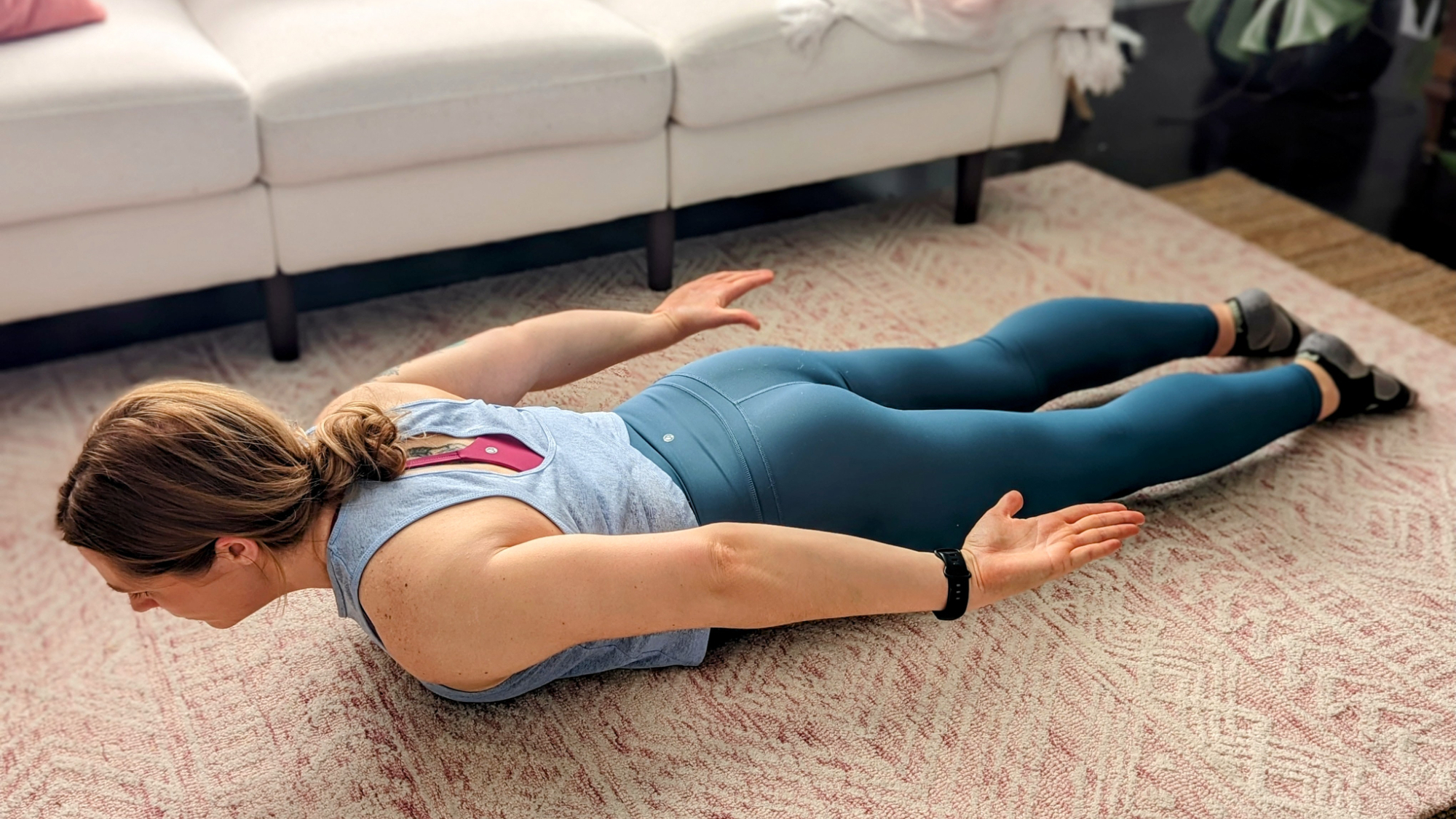
The cobra is a popular yoga pose that helps open your shoulders, but this prone cobra variation adds in an isometric hold, which means holding a contracted position for a certain amount of time.
Isometric holds help build muscle and strength by combining your body weight and time under tension (the amount of time you hold the move).
It's a corrective exercise that can help address poor posture and Upper Cross Syndrome, a common condition in people who sit for long periods.
- Lay on the floor on your stomach with your arms by your sides.
- Lift your chest off the floor, keeping your chin down.
- Then, lift your arms off the floor and contract your core and back muscles to stay lifted.
- Try moving your palms to face away from you from here, pointing your thumbs upward if you can.
- Otherwise, you can keep your palms flat facing upward or turn them down if you don't have the mobility to rotate your shoulders this way.
- Try to get your thumbs pointing up over time to increase the openness of your shoulders.
- Hold for about 30 seconds, then rest on the floor for 30 seconds.
- Repeat for six rounds so that you will have held the contraction for three minutes by the end.
5. Resistance band pull-apart
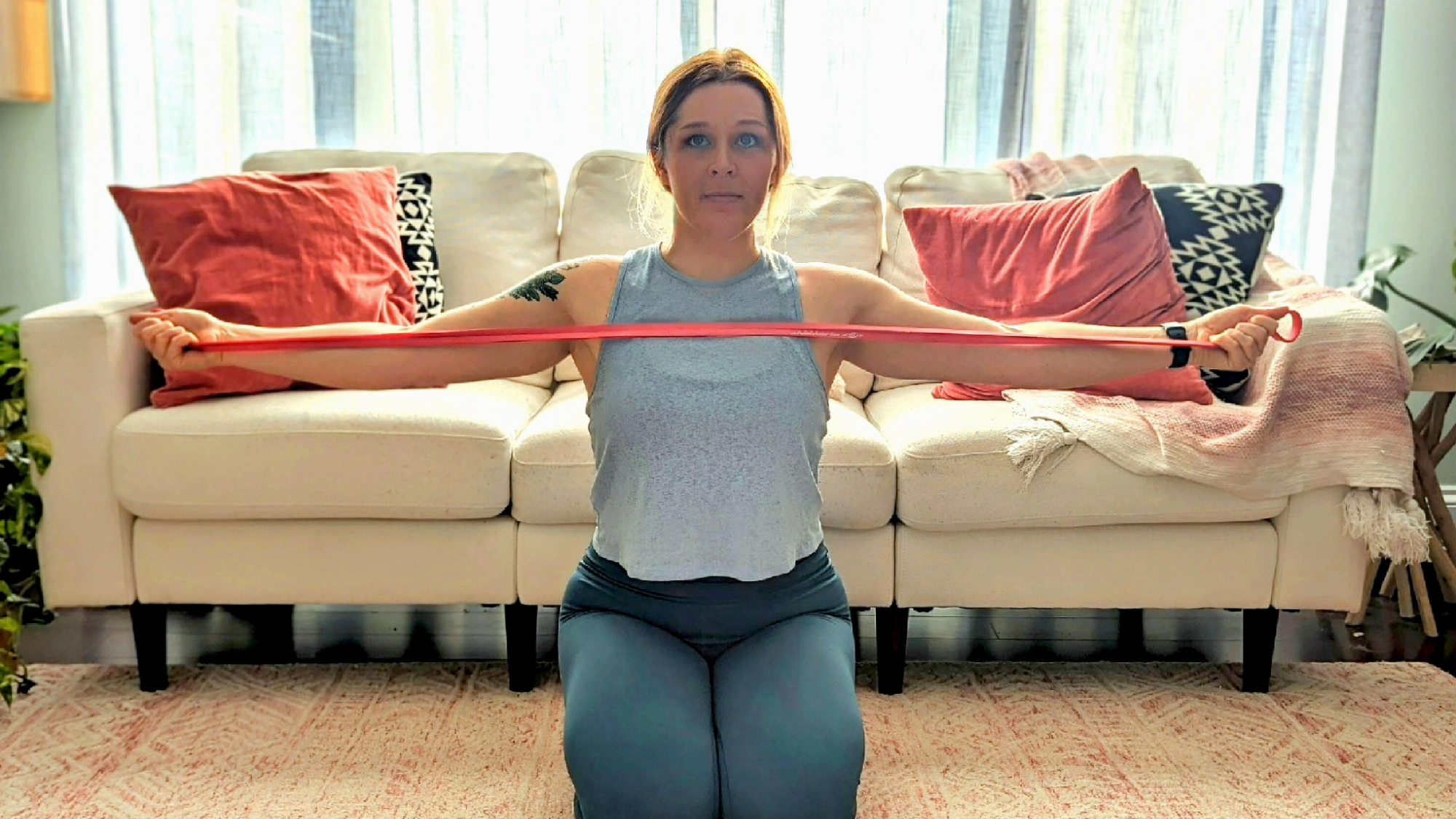
Resistance bands are an excellent tool for recovery day workouts. They come in various resistance levels and provide tension that will help gently activate muscles without adding fatigue.
The banded pull-apart is excellent as a warm-up exercise for upper body training and as part of a recovery workout to combat Upper Cross Syndrome.
This exercise will help stretch and strengthen the upper back and shoulders. You can do it with palms facing up or down as both hit different areas of your back and shoulders in unique, beneficial ways.
- Hold a light resistance band with an underhand grip in both hands, spaced slightly wider than shoulder width. Just ensure you will have band tension at the end position of the exercise.
- Bring the band to chest height and separate your hands, pulling and stretching the band to increase resistance.
- Bring the band to touch your chest, separating your arms to your sides as far as possible. Don't allow your elbows to bend or your arms to rotate during the movement.
- Squeeze your shoulder blades back and together to feel the contraction. Hold for up to five seconds, then slowly reverse the motion.
- Repeat 15 to 20 times.
6. Plate shoulder mobility drill
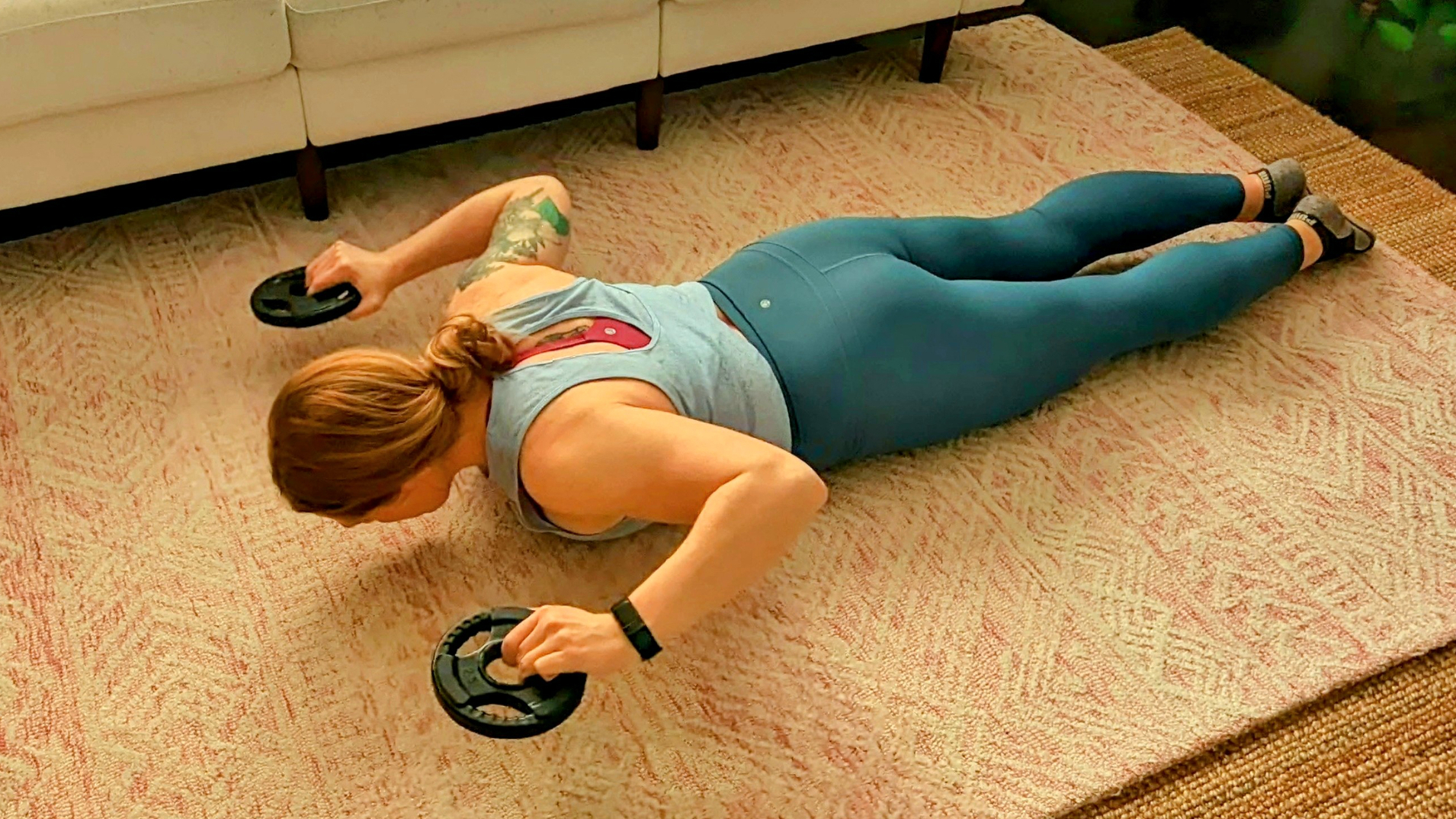
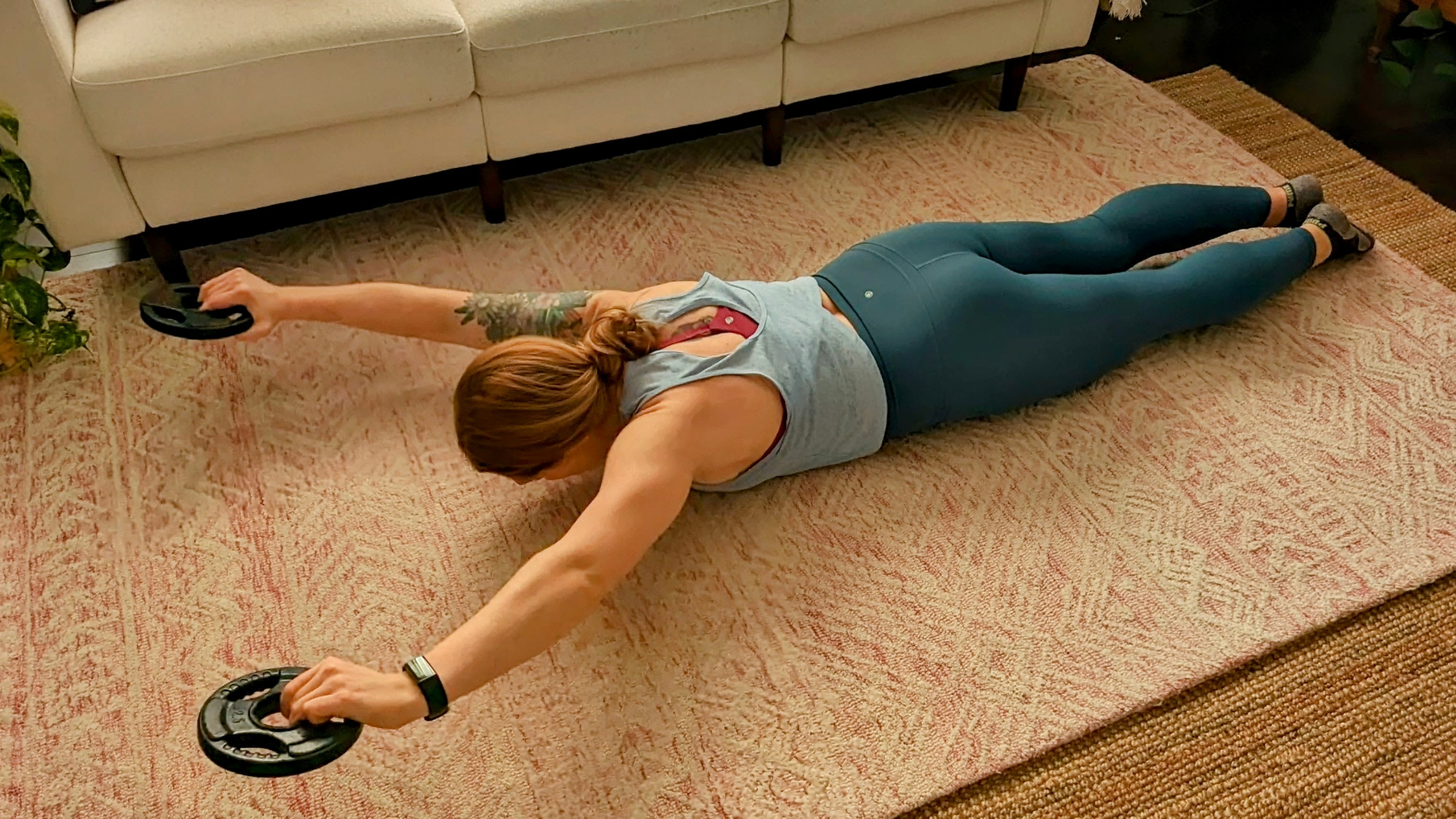
Shoulders are notoriously troublesome and can become injury prone or dysfunctional relatively easily. This is because our shoulders have a great range of motion, but it can be challenging if you don't have stability.
This shoulder mobility drill uses light 2.5lb weight plates to increase shoulder mobility and stability during your recovery day workout and combats the effects of sitting while strengthening your shoulders.
If you don't have a weight plate to hand, you can either do the move without weights or grab a couple of full water bottles or canned foods instead.
- Lay on your stomach on the floor with a 2.5lb weight plate in each hand.
- Bend your elbows at shoulder height with the plates in your hands and elbows at 90 degrees.
- Slowly straighten and extend your arms to move the plates away from you, arms overhead.
- Don't allow the weight plates to touch the floor, and keep your arms hovering above the floor.
- Reverse the motion to return to the bent arm position.
- Repeat 10 times.
7. Hip flexor leg lift

Your hip flexors are a muscle group (iliacus, psoas, pectineus, rectus femoris, and sartorius) located at the front of your hips and thighs that assist with flexing your hip or raising your knee upward toward your body.
They can become very tight due to sitting, leading to back pain and poor performance in movements such as squats. Strengthening your hip flexors combats the effects of sitting, improves mobility, and can help reduce your risk of injury.
- Sit on the floor, legs extended in front of you, with a kettlebell or another obstacle several inches high beside your ankle.
- Raise your arms out to the sides for balance and sit upright.
- Lift one leg up and over the kettlebell, then down to touch the floor on the other side.
- Reverse the motion by lifting back up and over.
- Repeat 15 to 20 times, then switch sides.
These seven recovery day workout exercises help keep your body moving and promote healing, but you can also boost your recovery by keeping your levels of protein topped up.
Your body uses protein to repair muscle fiber tears, so it's worth using the best protein powders for weight loss to get the nutrients you need. And you can use these post-workout smoothie ideas for a more tasty after exercise drink.







